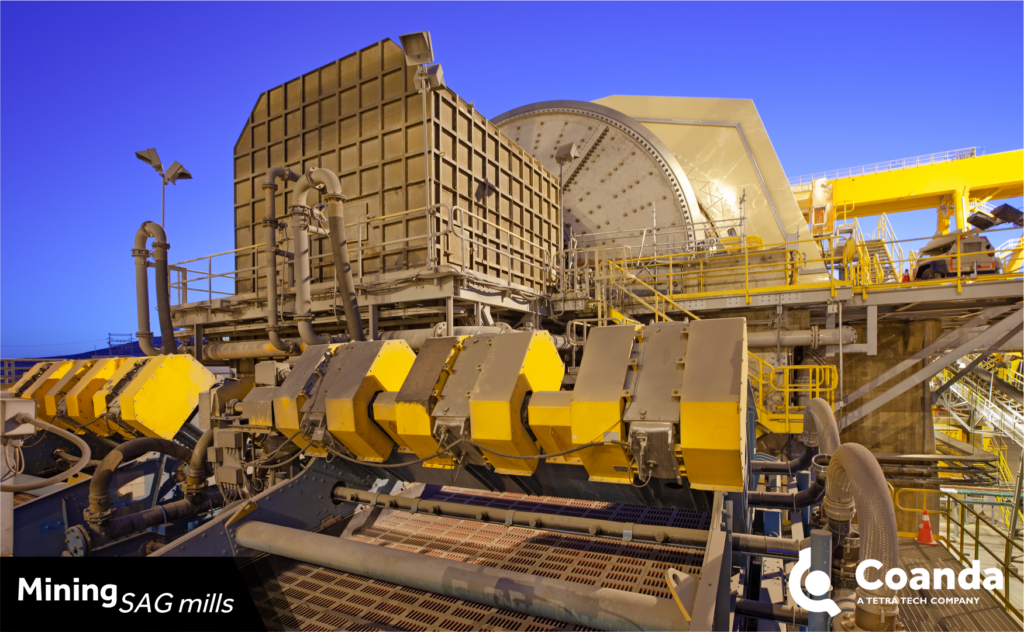AG & SAG mills
Posted on November 28, 2024 Mining
Autogenous grinding (AG) and semi-autogenous grinding (SAG) mills are widely used in the mineral processing industries for pulverizing rocks and reducing particle size to liberate minerals from ore. These tumbling mills consist of a large, rotating cylindrical shell placed horizontally, with their capacity strongly linked to their length and diameter. The diameter also plays a crucial role in the amount of impact applied to the ore.
AG mills use the ore itself as the grinding medium, while SAG mills include additional free-moving metal balls to enhance grinding. The feed, typically consisting of ore and water, enters one end of the mill and tumbles along due to the rotational motion of the shell, shrinking in size due to impact and abrasion. The ground product exits via the other end of the mill.

These mills are integral to the highest throughput grinding circuits, which often include screen feed distributors, screens, screen undersize boxes, cyclones, launders, and sometimes secondary pebble crushing. The screen feed distributor evenly splits the feed from AG/SAG mills onto the screens, which allow particles of a certain size and smaller to flow to the undersize boxes. Launders then transport the screen undersize slurry to the next stages in the plant.
AG/SAG mills are so widely employed in the mining industries that rarely is a new plant designed without them. Many existing plants are also retrofitting AG/SAG mills or expanding their current circuits with additional mills. Their ability to handle a wide variety of ore types, lower capital cost, reduced manpower requirements, and decreased metal consumption contribute to their popularity.

Design and operational parameters must be carefully selected and implemented for optimal performance. For instance, a balanced and even distribution between various screens is crucial. The screen feed distributor should ideally split the feed equally between the screens. Maldistribution between the screens can lead to screen overload and structural issues. Additionally, stable and steady launder flow from the screens is essential to avoid solids build-up, plugging, and undesirable flow oscillations or surging. Spillage and overflow from the launder are highly undesirable. The design selection of equipment in the AG/SAG mill line is usually dictated by the type of ore, its size distribution, and the throughput.
Coanda has assisted a wide variety of clients in the mining industries with design selection and modification of these mills and their downstream components using computational fluid dynamics (CFD). These collaborative projects have ranged from providing expert opinions on new designs to modifying existing designs to accommodate changes in ore type and/or throughput. We have conducted numerous modeling investigations to improve performance by identifying sources of undesirable performance and advising on corrective measures. Coanda has also successfully advised clients on component selection and design of new plants/circuits, helping them achieve exemplary operation of their AG/SAG mill circuits.


